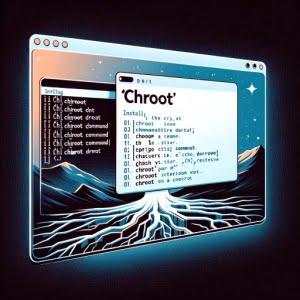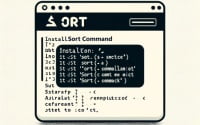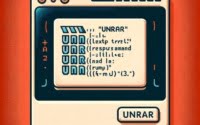Linux ‘chroot’ Command Installation and Usage Guide

Are you looking to install the chroot command on your Linux system but aren’t sure where to start? Many Linux users, particularly beginners, might find the task intimidating. Yet, chroot is a powerful tool that allows you to create a sandboxed environment within your system, isolating processes for testing and security. It’s a utility worth mastering. Chroot is readily available on most package management systems, making it a straightforward process once you know-how.
In this tutorial, we will guide you on how to install the chroot command on your Linux system. We will show you methods for both APT and YUM-based distributions, delve into compiling chroot from source, installing a specific version, and finally, how to use the chroot command and ensure it’s installed correctly.
So, let’s dive in and begin installing chroot on your Linux system!
TL;DR: How Do I Install and Use the ‘chroot’ Command in Linux?
In most Linux distributions, the ‘chroot’ command comes pre-installed, you can confirm this with the command,
which chroot. If for some reason it isn’t installed to your system, you can add it via the coreutils package and the command,sudo [apt-get/yum] install coreutils. You can use it by running the commandchroot NEWROOT [COMMAND [ARG]...].
# For example, to change the root directory to /tmp/newroot and run the command ls, you would use:
chroot /tmp/newroot ls
# Output:
# (The output here will list the contents of /tmp/newroot)
This is just a basic way to use the chroot command in Linux, but there’s much more to learn about chroot, including more advanced usage scenarios and troubleshooting tips. Continue reading for a comprehensive guide on how to use chroot effectively in Linux.
Table of Contents
- Understanding and Installing the ‘chroot’ Command in Linux
- Installing ‘chroot’ from Source Code
- Installing Different Versions of ‘chroot’
- Using ‘chroot’ and Verifying Installation
- Exploring Alternative Approaches to ‘chroot’
- Comparing the Alternatives
- Making a Recommendation
- Navigating ‘chroot’ Command Issues in Linux
- Understanding Process Isolation in Linux
- Exploring Process Isolation in System Administration and Security
- Wrapping Up: Installing the ‘chroot’ Command in Linux
Understanding and Installing the ‘chroot’ Command in Linux
The ‘chroot’ command in Linux changes the root directory for the current running process and its children. A process/command that runs in such a modified environment cannot access files and commands outside that environmental directory tree. This modified environment is known as a ‘chroot jail’. This is especially useful for system maintenance, testing, recovering broken systems, and more.
Let’s look at how to install the ‘chroot’ command in Linux.
Installing ‘chroot’ with APT
On Debian-based distributions like Ubuntu, you can use the Advanced Package Tool (APT) to install ‘chroot’.
sudo apt-get install coreutils
# Output:
# (A series of messages indicating the installation progress of coreutils, which includes 'chroot')
However, in most cases, ‘chroot’ comes pre-installed.
You can confirm this by running:
which chroot
# Output:
# /usr/sbin/chroot
This command will return the path to the ‘chroot’ command if it’s installed.
Installing ‘chroot’ with YUM
For RPM-based distributions like CentOS or Fedora, ‘chroot’ is also typically pre-installed. You can verify its presence with the same command used above.
If it’s not installed, you can install it using the Yellowdog Updater, Modified (YUM) with the following command:
sudo yum install coreutils
# Output:
# (A series of messages indicating the installation progress of coreutils, which includes 'chroot')
Remember, ‘chroot’ is part of the ‘coreutils’ package, so installing ‘coreutils’ will also install ‘chroot’.
Installing ‘chroot’ from Source Code
If you prefer to compile ‘chroot’ from source code, you can do so by following these steps. First, you need to download the source code. ‘chroot’ is part of the ‘coreutils’ package, so you’ll need to download that package. You can get it from the GNU coreutils website.
After downloading and extracting the package, navigate to the directory with the source code and run the following commands:
./configure
make
sudo make install
# Output:
# (A series of messages indicating the compilation and installation progress)
Installing Different Versions of ‘chroot’
From Source Code
The process of installing different versions of ‘chroot’ from source code is similar to the process described above. You just need to download the source code for the desired version from the GNU coreutils website.
Using Package Managers
If you’re using a package manager like ‘apt’ or ‘yum’, installing different versions of ‘chroot’ can be a bit more complicated because these package managers typically install the latest stable version of a package.
APT
On Debian-based distributions, you can see the available versions of a package using the following command:
apt-cache policy coreutils
# Output:
# (A list of available versions of the 'coreutils' package)
To install a specific version, you can use the following command:
sudo apt-get install coreutils=version
# Output:
# (A series of messages indicating the installation progress)
Replace ‘version’ with the version number you want to install.
YUM
On RPM-based distributions, you can list the available versions of a package using the ‘yum’ command as follows:
yum --showduplicates list coreutils
# Output:
# (A list of available versions of the 'coreutils' package)
To install a specific version, you can use the following command:
sudo yum install coreutils-version
# Output:
# (A series of messages indicating the installation progress)
Replace ‘version’ with the version number you want to install.
Key Differences Between Versions
The main differences between versions of ‘chroot’ are bug fixes, performance improvements, and new features. Here’s a summary of the notable changes in the recent versions:
| Version | Notable Changes |
|---|---|
| 8.32 | Bug fixes, performance improvements |
| 8.31 | New features, bug fixes |
| 8.30 | Performance improvements, bug fixes |
Using ‘chroot’ and Verifying Installation
Basic Usage of ‘chroot’
To use ‘chroot’, you need to specify the new root directory. For example, if you want to change the root directory to ‘/tmp/newroot’, you can use the following command:
chroot /tmp/newroot
# Output:
# (You will be in a new shell with '/tmp/newroot' as the root directory)
Verifying ‘chroot’ Installation
You can verify that ‘chroot’ is installed and working correctly by running the following command:
chroot --version
# Output:
# chroot (GNU coreutils) 8.32
This command will print the version of ‘chroot’, confirming that it’s installed correctly.
Exploring Alternative Approaches to ‘chroot’
While ‘chroot’ is a powerful tool for creating isolated environments in Linux, it’s not the only option. There are other methods like using containers or virtual machines that can also provide isolated environments. Let’s explore them in detail.
Linux Containers (LXC)
Linux Containers (LXC) is an operating system-level virtualization method that allows running multiple isolated Linux systems (containers) on a single control host. These containers look and act like real complete systems.
You can install LXC using the following command:
# For Debian-based distributions
sudo apt-get install lxc
# For RPM-based distributions
sudo yum install epel-release
sudo yum install lxc lxc-templates
# Output:
# (A series of messages indicating the installation progress of LXC)
Docker Containers
Docker is a platform that allows you to automate the deployment, scaling, and management of applications using containerization. It’s similar to LXC but is more popular and has more features.
You can install Docker using the following command:
# For Debian-based distributions
sudo apt-get install docker.io
# For RPM-based distributions
sudo yum install docker
# Output:
# (A series of messages indicating the installation progress of Docker)
Virtual Machines (VMs)
A virtual machine (VM) is an emulation of a computer system that provides the same functionality as a physical computer. VMs run on hypervisors, which manage the VMs and provide them access to the underlying hardware.
You can install a hypervisor like VirtualBox using the following command:
# For Debian-based distributions
sudo apt-get install virtualbox
# For RPM-based distributions
sudo yum install VirtualBox
# Output:
# (A series of messages indicating the installation progress of VirtualBox)
Comparing the Alternatives
| Method | Advantages | Disadvantages |
|---|---|---|
| ‘chroot’ | Lightweight, simple to use | Limited isolation, no resource control |
| LXC | Better isolation than ‘chroot’, control over resources | More complex than ‘chroot’ |
| Docker | Excellent isolation, lots of features, large community | More complex than LXC and ‘chroot’ |
| VMs | Complete isolation, can run different OS | Heavyweight, slower than the other methods |
Making a Recommendation
If you need a quick and simple method for creating an isolated environment in Linux, ‘chroot’ is a good choice. However, if you need better isolation and more control over resources, you should consider using LXC, Docker, or VMs. Docker is particularly recommended if you’re deploying applications in a production environment due to its extensive features and large community.
While the ‘chroot’ command is a powerful tool, it’s not without its challenges. Let’s explore some common issues you might encounter while using ‘chroot’ and how to troubleshoot them.
Incorrect File Permissions
One common issue is incorrect file permissions in the new root directory. If you’re getting permission denied errors after using ‘chroot’, you might need to change the file permissions.
# For example, to give read, write, and execute permissions to the user for all files in /tmp/newroot, you would use:
chmod u+rwx /tmp/newroot/*
# Output:
# (No output on success)
This command changes the permissions of all files in ‘/tmp/newroot’ to read, write, and execute for the user.
Missing Shared Libraries
Another common issue is missing shared libraries. If the command you’re trying to run in the new root requires shared libraries that are not present in the new root directory, it will fail to run.
You can check the required shared libraries for a command using the ‘ldd’ command:
# For example, to check the required shared libraries for the 'ls' command, you would use:
ldd /bin/ls
# Output:
# (A list of the required shared libraries for the 'ls' command)
If any of these libraries are missing in the new root directory, you’ll need to copy them from the original root directory.
‘chroot’: Cannot Change Root Directory to ‘/path/to/newroot’: Operation not Permitted
If you see this error, it’s likely because you’re trying to run ‘chroot’ as a non-root user. ‘chroot’ is a powerful command that can affect the whole system, so only root can run it. If you need to run ‘chroot’ as a non-root user, consider using ‘sudo’.
Understanding Process Isolation in Linux
Process isolation is a fundamental concept in Linux and many other operating systems. It’s the mechanism that allows each process to run in its own protected space, isolated from other processes. Without process isolation, one process could easily interfere with another, leading to system instability or security issues.
Importance of Process Isolation
Process isolation is crucial for both system security and testing. From a security perspective, process isolation prevents a process from accessing the resources (like memory) of another process unless explicitly allowed. This limits the potential damage that a malicious or compromised process can do.
From a testing perspective, process isolation allows you to test changes in a controlled environment without affecting the rest of the system. If something goes wrong during testing, the impact is limited to the isolated environment.
Process Isolation and ‘chroot’
The ‘chroot’ command in Linux is a simple yet powerful tool for creating process isolation. When you run a command with ‘chroot’, it changes the root directory for that command and its child processes. This new root directory, known as a ‘chroot jail’, acts as an isolated environment where the command runs.
Let’s illustrate this with an example. Suppose you have a directory ‘/tmp/newroot’ that you want to use as a ‘chroot jail’. You can use the ‘chroot’ command as follows:
chroot /tmp/newroot /bin/bash
# Output:
# (You will be in a new shell with '/tmp/newroot' as the root directory)
This command starts a new Bash shell where ‘/tmp/newroot’ is the root directory. In this shell, you can run commands and they will only see ‘/tmp/newroot’ and its subdirectories. They won’t be able to access or affect the rest of the system.
This is a basic example of process isolation in Linux using the ‘chroot’ command. It’s a powerful technique for creating isolated environments for testing and security.
Exploring Process Isolation in System Administration and Security
Process isolation is an integral part of system administration and security. It allows system administrators to separate and isolate processes, providing a secure environment for testing and limiting the potential damage from compromised processes. This is where the ‘chroot’ command comes in handy.
‘chroot’ creates a sandboxed environment, isolating processes for testing and security. It changes the apparent root directory for the current running process and its child processes, creating a ‘chroot jail’. This isolation technique is particularly useful in system maintenance, testing, and recovering broken systems.
Delving into Containers and Virtualization
While ‘chroot’ provides a basic level of process isolation, there are other methods that offer more advanced features and better isolation. Containers and virtualization are two such methods.
Containers, like Docker and LXC, provide a way to package an application with its runtime dependencies, isolating the application from the rest of the system. Each container runs as an isolated process in userspace on the host operating system.
Virtualization, on the other hand, involves running a full-fledged virtual machine (VM) with its own operating system, providing complete isolation from the host system. Tools like VirtualBox and VMware are popular for creating and managing VMs.
Further Resources for Mastering Process Isolation
For those interested in diving deeper into the world of process isolation, here are some useful resources:
- Linux Containers (LXC) Official Documentation: A comprehensive guide to using LXC for process isolation in Linux.
Docker Documentation: An extensive resource for understanding and using Docker containers.
VirtualBox Official Documentation: A detailed guide on creating and managing virtual machines with VirtualBox.
Wrapping Up: Installing the ‘chroot’ Command in Linux
In this comprehensive guide, we’ve navigated the intricacies of installing and using the ‘chroot’ command in Linux. We’ve explored how this powerful command helps create isolated environments, enhancing system security and providing a controlled environment for testing.
We began with the basics, learning how to install ‘chroot’ using package managers like APT and YUM. We then delved deeper, exploring how to compile ‘chroot’ from source code and install different versions of ‘chroot’. We also provided a simple example of using ‘chroot’ and verifying its installation.
In the advanced section, we discussed alternative methods for creating isolated environments in Linux, such as using containers or virtual machines. We compared these methods with ‘chroot’, highlighting their advantages and disadvantages.
| Method | Advantages | Disadvantages |
|---|---|---|
| ‘chroot’ | Lightweight, simple to use | Limited isolation, no resource control |
| Linux Containers (LXC) | Better isolation than ‘chroot’, control over resources | More complex than ‘chroot’ |
| Docker Containers | Excellent isolation, lots of features, large community | More complex than LXC and ‘chroot’ |
| Virtual Machines (VMs) | Complete isolation, can run different OS | Heavyweight, slower than the other methods |
We also tackled common issues you might encounter when using ‘chroot’, providing solutions to help you overcome these challenges.
Whether you’re a novice Linux user or a seasoned system administrator, we hope this guide has given you a solid understanding of the ‘chroot’ command and its role in process isolation. With this knowledge, you’ll be well-equipped to create and manage isolated environments in Linux. Happy coding!


